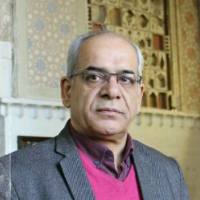Studying the Status of the Art of Decorative Brickwork In Architecture of Pahlavi IPeriod(Iran)
Author(s):
Abstract:
Art of brickwork as an outstanding phenomenon in this land’s history of architecture is of a rich background and authenticity. This art which comes in various decorative and visual types، has always been present and accompanied by its undeniable identity. In contemporary era، in keeping with the legacy of this authenticity from the past، this art has collided with global and international contemporary architecture in the context of new expressions of embellishment and ornaments (from Neoclassic till modern era) which has created new and different shapes and visual expressions through this collision or this process of companionship، composition، combination and itsimpressionability. This has resulted in emerging of new forms of ornaments in contemporary architecture of Iran. The hypothesis states that the architecture of the First Pahlavi era 1299-1320 (1920-1941) has been of exceptional and astonishing existence in the field of decorative brick work and it seems as though these valuable decorative brickworks and the presence of Iranian master craftsmen and their manufacturers have been neglected and have not been regarded with the kindness and importance that they should have been bestowed upon in between the issues or the transformed architecture of this period. In other words the artistic presence of past generations and the role of artists and masters of traditional architecture can be traced and recognized in this 20 year period. This text is pursuing the processing and expressing of the fact that even though the decorative art of the brickwork in the contemporary era and especially in the First Pahlavi period had been collided with and influenced by modernization movement and modern architecture revolution (particularly primary modernism) and in other words in despite of variety in architecture styles، it has succeeded in creating a multitude of design compositions and a variety of patterns and forms. This as a distinguished method is unique and explanatory of an Iranian Art. This research، through qualitative research methods and then via citation and adaptation to 32 decorative works in 7 different fields of decorative functions which were placed in this era’s works of architecture with different functions and locations in various cities، has obtained results which indicate the amount of which the art of decorative brickwork has been under the impression of previous Islamic Iranian or classic Iranian and western works of architecture in its own process of decorative renovation، in First Pahlavi era، whether in design and pattern، or the combination of decorative materials and in context of different fields of architecture styles in this period (based on the schedule and presented diagrams). The majority of buildings and important worksin this period which are intertwined with the art of brick work were built in the years before 1313 (1934). This was the period in which the style of almost all the buildings were based on the artistic style of the Iranian، Islamic and ancient architecture. Gradually، with these years passing by and approaching modern architecture with the presence of other materials such as stone and cement، this style of architecture and art of brick work becomes scarce. However، this decorative art is still in use and has not been less of value to this day.
Keywords:
Language:
Persian
Published:
HOnar - ha - ye - ziba Memari - va - shahrsazi, Volume:18 Issue: 1, 2014
Page:
15
magiran.com/p1234482
دانلود و مطالعه متن این مقاله با یکی از روشهای زیر امکان پذیر است:
اشتراک شخصی
با عضویت و پرداخت آنلاین حق اشتراک یکساله به مبلغ 1,390,000ريال میتوانید 70 عنوان مطلب دانلود کنید!
اشتراک سازمانی
به کتابخانه دانشگاه یا محل کار خود پیشنهاد کنید تا اشتراک سازمانی این پایگاه را برای دسترسی نامحدود همه کاربران به متن مطالب تهیه نمایند!
توجه!
- حق عضویت دریافتی صرف حمایت از نشریات عضو و نگهداری، تکمیل و توسعه مگیران میشود.
- پرداخت حق اشتراک و دانلود مقالات اجازه بازنشر آن در سایر رسانههای چاپی و دیجیتال را به کاربر نمیدهد.
In order to view content subscription is required
Personal subscription
Subscribe magiran.com for 70 € euros via PayPal and download 70 articles during a year.
Organization subscription
Please contact us to subscribe your university or library for unlimited access!


